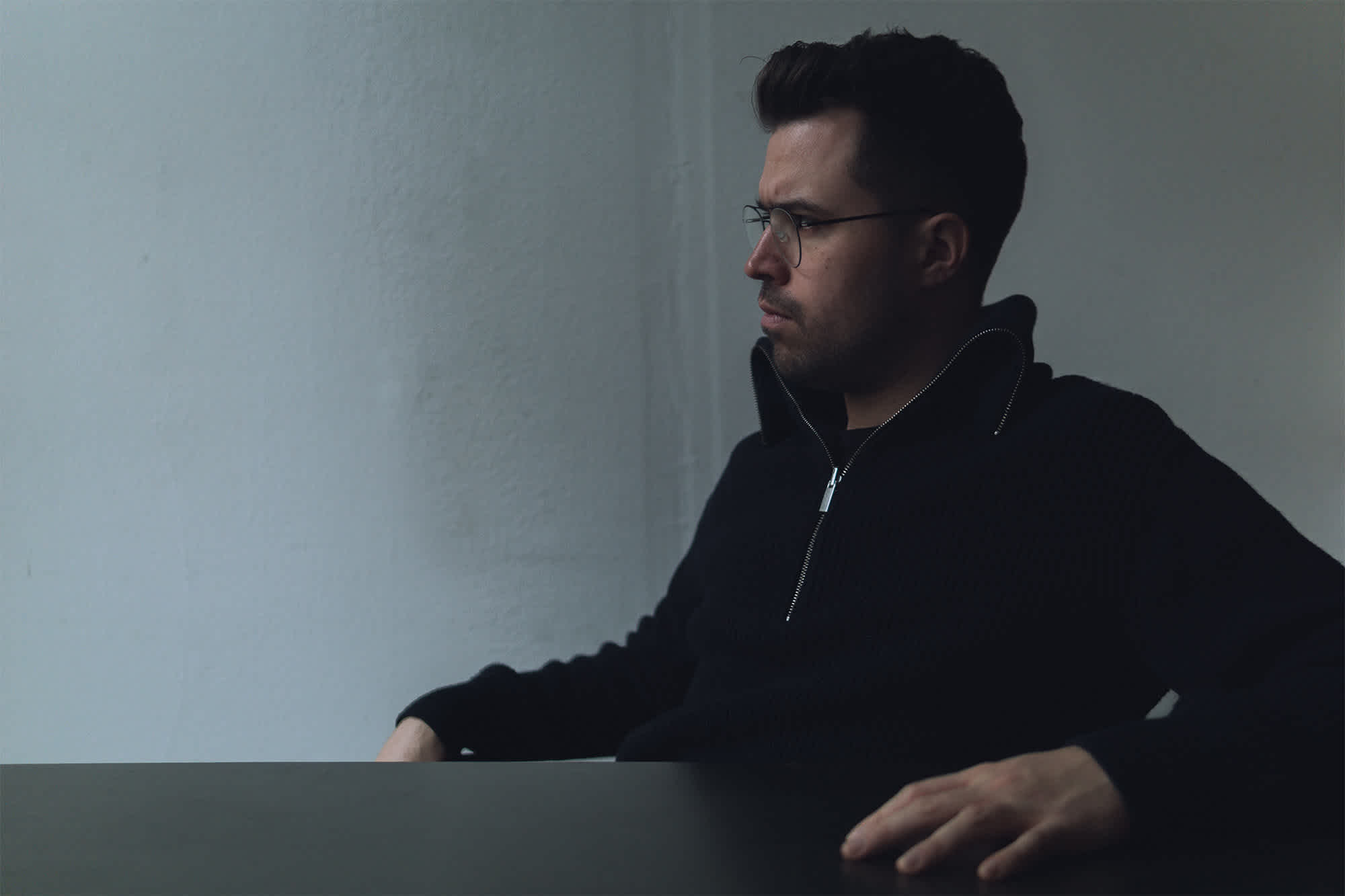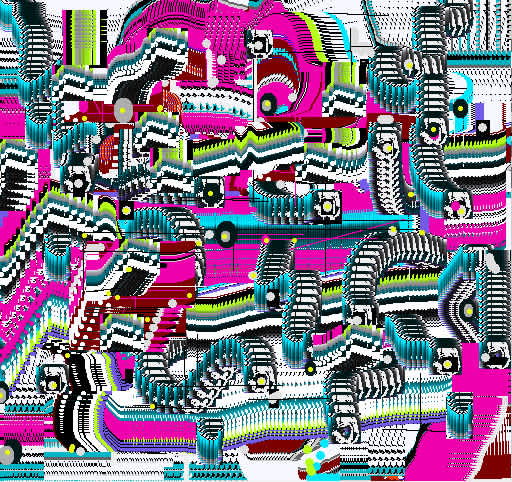About the Work
Manuel Rossner’s video “Bouncy Sculpture V” is part of his COLOR SERIES in which he examines the digital realm. Wood burns or breaks into pieces. Digital material also has qualities that make it unique. Digital material mimics what we know from the physical world. Why do we understand and feel virtual environments when they ultimately are a bunch of zeros and ones? Rossner draws the shapes of his Bouncy Sculptures in virtual reality. The computer gives volume to his movement in space and simulates how it behaves when exposed to the manipulated physics of the artist’s digital world.
This NFT carries a Verisart Certificate of Authenticity, a blockchain certificate providing proof of the artist's verified identity and additional context about the work.
The closing time noted at the top of the auction page indicates when the first lot will begin to close. The countdown timer on the artwork pages will display the end time for the lot. Each lot closes in 2-minute increments and will be extended by 15 minutes if a bid is placed within the 15 minutes before the lot’s scheduled closing time.
Kindly note that the entered amount represents your current Bid amount. All bids placed on Artsy are final and non-retractable.
Gas fees can vary depending on network demand and are non-refundable even if you are outbid, for more information see our FAQ.
THE BID PRICE IS INCLUSIVE OF SALES TAX. IF YOU ARE THE WINNING BIDDER AND SALES TAX DOES NOT APPLY TO YOUR PURCHASE, YOU WILL BE RESPONSIBLE FOR THE ENTIRE BID PRICE AND WILL NOT BE ENTITLED TO A REFUND OF SALES TAX.
0x44dcebb4374f7e01ba415c7be243f6c66636ea1c
181
Non-fungible Token

- Manuel Rossner
- German, b. 1989
Manuel Rossner (b. 1989) lives and works in Berlin. He studied art at the University of Art and Design Offenbach, the École des Arts-Décoratifs Paris and the Tongji College for Design and Innovation Shanghai.
Since 2012, Rossner has been designing digital spaces and virtual worlds in which he investigates the effects of technological developments on society and art. He builds interactive architecture with digital materials that are spatial interventions and virtual extensions.
In 2021, Rossner participated in the group show “Out of Space” at Hamburger Kunsthalle. The exhibition focuses on the notion of space in the work of artists such as Dan Graham, Gordon Matta-Clark and Charlotte Posenenske. Rossner created the site-specific virtual reality installation “How Did We Get Here?” for the exhibition. The artwork is the first NFT (Non Fungible Token) in the permanent collection of the museum.
For the Grand Palais Éphemère in Paris Rossner created the artwork “Where to Go from Here?”. It’s shown where multiple world exhibitions took place and where the Eiffel Tower, one of the most recognizable steel structures in the world, was built from 1887 to 1889.
Rossner’s site-specific augmented reality experience questions the future of technology. Its sleek aesthetic, the “signature of the present” (Byung Chul-Han), represents the digital age in which speed, flexibility and gamification are idealized.
About the Work
Manuel Rossner’s video “Bouncy Sculpture V” is part of his COLOR SERIES in which he examines the digital realm. Wood burns or breaks into pieces. Digital material also has qualities that make it unique. Digital material mimics what we know from the physical world. Why do we understand and feel virtual environments when they ultimately are a bunch of zeros and ones? Rossner draws the shapes of his Bouncy Sculptures in virtual reality. The computer gives volume to his movement in space and simulates how it behaves when exposed to the manipulated physics of the artist’s digital world.
This NFT carries a Verisart Certificate of Authenticity, a blockchain certificate providing proof of the artist's verified identity and additional context about the work.
The closing time noted at the top of the auction page indicates when the first lot will begin to close. The countdown timer on the artwork pages will display the end time for the lot. Each lot closes in 2-minute increments and will be extended by 15 minutes if a bid is placed within the 15 minutes before the lot’s scheduled closing time.
Kindly note that the entered amount represents your current Bid amount. All bids placed on Artsy are final and non-retractable.
Gas fees can vary depending on network demand and are non-refundable even if you are outbid, for more information see our FAQ.
THE BID PRICE IS INCLUSIVE OF SALES TAX. IF YOU ARE THE WINNING BIDDER AND SALES TAX DOES NOT APPLY TO YOUR PURCHASE, YOU WILL BE RESPONSIBLE FOR THE ENTIRE BID PRICE AND WILL NOT BE ENTITLED TO A REFUND OF SALES TAX.
0x44dcebb4374f7e01ba415c7be243f6c66636ea1c
181
Non-fungible Token

- Manuel Rossner
- German, b. 1989
Manuel Rossner (b. 1989) lives and works in Berlin. He studied art at the University of Art and Design Offenbach, the École des Arts-Décoratifs Paris and the Tongji College for Design and Innovation Shanghai.
Since 2012, Rossner has been designing digital spaces and virtual worlds in which he investigates the effects of technological developments on society and art. He builds interactive architecture with digital materials that are spatial interventions and virtual extensions.
In 2021, Rossner participated in the group show “Out of Space” at Hamburger Kunsthalle. The exhibition focuses on the notion of space in the work of artists such as Dan Graham, Gordon Matta-Clark and Charlotte Posenenske. Rossner created the site-specific virtual reality installation “How Did We Get Here?” for the exhibition. The artwork is the first NFT (Non Fungible Token) in the permanent collection of the museum.
For the Grand Palais Éphemère in Paris Rossner created the artwork “Where to Go from Here?”. It’s shown where multiple world exhibitions took place and where the Eiffel Tower, one of the most recognizable steel structures in the world, was built from 1887 to 1889.
Rossner’s site-specific augmented reality experience questions the future of technology. Its sleek aesthetic, the “signature of the present” (Byung Chul-Han), represents the digital age in which speed, flexibility and gamification are idealized.
